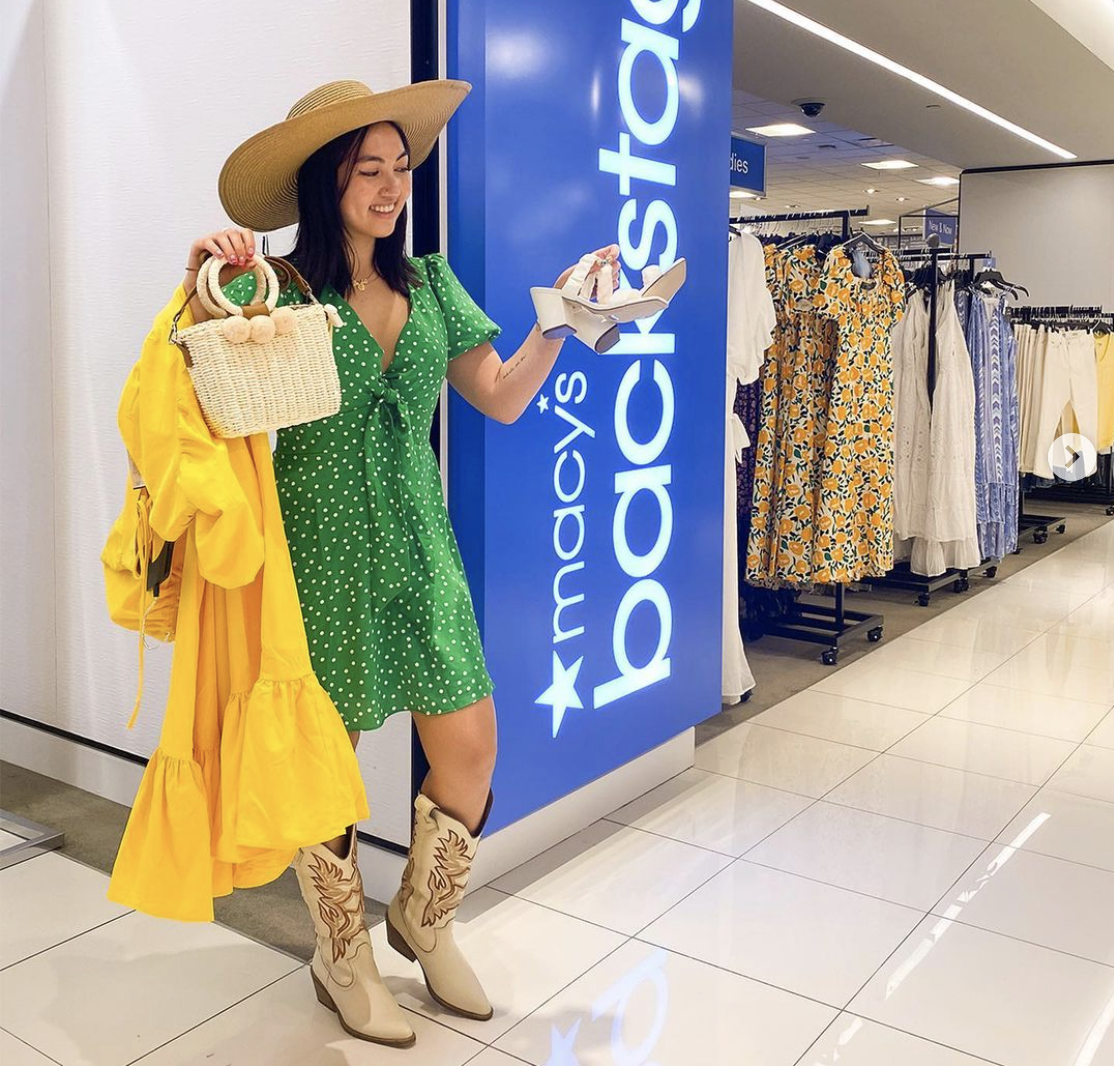The History of Macy’s
If you’ve ever shopped at Macy’s, you know that it’s more than just a department store.

RETAILBOSS provides well-curated, research-driven news and insights into the trends…
If you've ever shopped at Macy's, you know that it's more than just a department store. It's a cultural icon, a symbol of American retail, and a beloved institution in cities across the country. But you might not know the fascinating story behind this retail giant's rise to fame. Macy's began as a small dry goods store in New York City in the mid-1800s, founded by a young entrepreneur named R.H. Macy. Over the years, it grew and evolved, expanding into new markets and pioneering new retail concepts.
Today, Macy's is a household name, known for its iconic Thanksgiving Day Parade, celebrity collaborations, and wide range of products and services. Join us on a journey through Macy's history, as we explore the people, events, and innovations that have made this beloved brand what it is today.
The early days of R.H. Macy's store in New York City
In 1858, R.H. Macy opened his first store on the corner of 14th Street and 6th Avenue in New York City. Macy had previously worked as a sailor and a clerk, and he used his savings to start his own business selling dry goods, such as textiles, clothing, and accessories. At the time, New York City was rapidly growing, and Macy's store was one of many in the bustling shopping district. However, Macy quickly set himself apart from his competitors by offering high-quality products at reasonable prices and providing excellent customer service.
Despite the initial success of his store, Macy faced many challenges in the early days. He had to compete with larger and more established retailers, such as A.T. Stewart & Co. and Lord & Taylor, and he struggled to attract customers to his out-of-the-way location. To overcome these obstacles, Macy focused on creating a unique shopping experience that would set him apart from his competitors. He introduced new products, such as stationery and toys, and he offered a wide range of sizes and styles to cater to different customers' needs. He also introduced the concept of window displays, which would eventually become a hallmark of the Macy's brand.
Despite these innovations, Macy's store did not become profitable until several years after its opening. In 1862, the store moved to a larger location on Broadway and expanded its offerings to include furniture and carpets. The move proved successful, and Macy's began to attract a wider range of customers, including wealthy New Yorkers and tourists. By the end of the decade, Macy's had become one of the largest and most successful department stores in the city.
Macy's expansion and growth during the late 1800s and early 1900s
During the late 1800s and early 1900s, Macy's continued to grow and expand, both in New York City and beyond. In 1902, the store moved to its current location at Herald Square, a prime retail location in the heart of Manhattan. The new store was the largest department store in the world at the time, spanning an entire city block and offering a wide range of products and services, including a restaurant, a beauty salon, and even a pet department.
Macy's also expanded its offerings to include more high-end merchandise, such as designer clothing and jewelry. In 1907, the store introduced its first Christmas window display, a tradition that would continue for decades and become a major attraction for tourists and locals alike. Macy's also began to develop its own private label brands, such as Charter Club and Alfani, which would become staples of the store's offerings.
Despite these successes, Macy's faced challenges during this period as well. The store was forced to adapt to changing consumer trends, such as the rise of mail-order catalogs and the popularity of suburban shopping centers. Macy's responded by developing its own mail-order catalog and opening new stores in suburban areas, such as Long Island and New Jersey. The store also began to focus on customer service and convenience, offering services such as personal shopping and delivery.
The birth of the Macy's Thanksgiving Day Parade and its evolution over the years
One of Macy's most enduring legacies is the Thanksgiving Day Parade, which has become a beloved American tradition. The parade began in 1924, when Macy's employees decided to organize a procession featuring floats, bands, and live animals. The parade was a huge success, attracting over 250,000 spectators and generating positive publicity for the store.
Over the years, the parade has evolved and grown, becoming more elaborate and sophisticated. In the 1930s, Macy's hired a team of puppeteers and designers to create giant helium-filled balloons, which would become a signature feature of the parade. The first balloon was Felix the Cat, which was 60 feet tall and required 50 handlers to operate.
In the following decades, the parade continued to grow in size and popularity, featuring more elaborate floats, balloons, and performances. The parade also became a major media event, with millions of viewers tuning in to watch the live broadcast on television.
Today, the Macy's Thanksgiving Day Parade is one of the largest and most watched events in the world, attracting over 3.5 million spectators in person and millions more watching at home.
Macy's role in shaping American retail and consumer culture
Macy's has played a significant role in shaping American retail and consumer culture over the past century. The store was one of the first to introduce many of the retail concepts that are now taken for granted, such as the department store layout, the use of window displays, and the development of private label brands.
Macy's has also been a leader in marketing and advertising, developing innovative campaigns that have helped to create a strong brand identity. In the 1930s, the store introduced the concept of themed events, such as the "Enchanted Forest" holiday display, which would become a popular attraction for families. Macy's also pioneered the use of celebrity collaborations, partnering with designers such as Tommy Hilfiger and Martha Stewart to create exclusive collections.
In recent years, Macy's has embraced e-commerce and digital marketing, launching its own website and mobile app and developing targeted advertising campaigns on social media platforms. The store has also expanded its offerings to include more sustainable and socially responsible products, such as organic cotton clothing and fair trade coffee.
Macy's innovations in marketing and advertising, including celebrity collaborations and themed events
Macy's has been at the forefront of marketing and advertising since its early days, developing innovative campaigns that have helped to create a strong brand identity. One of Macy's most successful marketing strategies has been its use of celebrity collaborations, which have helped to attract new customers and generate buzz around the store's offerings.
Macy's has also been a leader in creating themed events and displays, which have become a hallmark of the store's brand. These events, such as the "Enchanted Forest" holiday display and the "Flower Show" spring event, have become major attractions for customers and tourists alike, helping to drive foot traffic to the store.
In the 1980s and 1990s, Macy's partnered with celebrities such as Madonna, Cher, and Martha Stewart to create exclusive product lines. These collaborations proved to be hugely successful, generating millions of dollars in sales and increasing brand awareness.
Today, Macy's continues to partner with celebrities and influencers, such as Royalty by Maluma and Jennifer Lopez to create exclusive collections and promote its products.
Macy's modernization and adaptation to e-commerce and digital marketing
As consumer behavior has shifted towards online shopping and digital channels, Macy's has adapted its business model to stay competitive. The store has invested heavily in e-commerce and digital marketing, launching its own website and mobile app and developing targeted campaigns on social media platforms.
Macy's has also embraced new technologies, such as augmented reality and virtual reality, to enhance the customer experience. In 2018, the store launched a virtual reality furniture shopping experience, which allows customers to see how furniture would look in their homes before making a purchase. Macy's has also experimented with augmented reality displays, such as a holiday-themed display that allowed customers to see virtual snowflakes falling around them.
Challenges and controversies faced by Macy's throughout its history
Like any major corporation, Macy's has faced its share of challenges and controversies over the years. In the 1990s and early 2000s, the store struggled to adapt to changing consumer trends, such as the rise of discount retailers and the popularity of online shopping. Macy's responded by closing some of its underperforming stores and focusing on e-commerce and digital marketing.
In recent years, Macy's has faced criticism for its treatment of workers and its impact on the environment. In 2016, the store was accused of racial profiling and discrimination against minority customers, leading to a public backlash and calls for a boycott. Macy's has also been criticized for its use of fast fashion and its contribution to the textile industry's environmental impact.
Macy's impact on local communities and philanthropy efforts
Despite these challenges, Macy's has also had a positive impact on local communities and philanthropy efforts. The store has a long history of charitable giving, supporting causes such as education, healthcare, and the arts. In 2019, Macy's donated over $70 million to charitable organizations, including the Make-A-Wish Foundation and the American Heart Association.
Macy's has also been a major employer, providing jobs and economic opportunities to communities across the country. The store has a diverse workforce, with over 130,000 employees from a range of backgrounds and cultures.
The future of Macy's and its potential for continued success
As Macy's approaches its 200th anniversary, the store faces new challenges and opportunities. The retail industry is rapidly changing, with new technologies and consumer trends emerging every year. Macy's will need to continue to adapt and innovate to stay competitive in this evolving landscape.
However, Macy's also has many strengths that position it for continued success. The store has a strong brand identity and a loyal customer base, and it has proven its ability to adapt to changing consumer trends in the past. Macy's also has a large and diverse product offering, ranging from clothing and accessories to furniture and home goods.
Macy's legacy
Macy's has come a long way since its humble beginnings as a small dry goods store in New York City. Over the past century and a half, the store has grown and evolved, becoming a cultural icon and a beloved institution in cities across the country. Macy's has played a significant role in shaping American retail and consumer culture, introducing new concepts and innovations that have become standard in the industry.
Despite the challenges and controversies it has faced over the years, Macy's remains a beloved brand with a strong legacy and enduring cultural significance. As the retail industry continues to evolve, Macy's will need to continue to adapt and innovate to stay relevant. However, with its rich history and loyal customer base, Macy's is well-positioned to continue to thrive for many years to come.
RETAILBOSS provides well-curated, research-driven news and insights into the trends and business aspects of the rapidly evolving retail industry.






